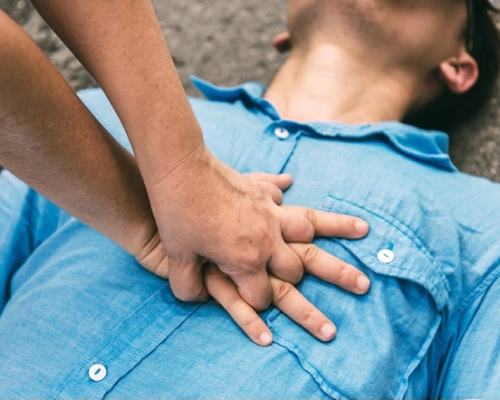Recently a lot of our Atticus team took part in CPR training in order to advance the corporate health, all of whom found the knowledge extremely beneficial. This training is crucial for our environment, however we encourage everyone and anyone to take the time to participate in a CPR or first-aid course.
Here is a link to Australian courses https://resus.org.au/courses/
Cardiopulmonary resuscitation (CPR) is a first-aid technique that can be used if someone is not breathing properly or if their heart has stopped.
CPR involves chest compression’s and rescue breaths that help circulate blood and oxygen in the body. This can help keep the brain and vital organs alive.
If someone is not responding to you after an accident, injury, collapse, envenomation (bites and stings) or poisoning, and is not breathing normally (gasping is not normal breathing) then:
- Ensure you are not in danger then call triple zero (000) for an ambulance.
- If calling triple zero (000) does not work on your mobile then try calling 112. This number is only for mobile phones.
- Airway – check airway is clear. Remove any obvious obstruction to the mouth or nose such as vomit, blood, food or loose teeth, and gently tilt head back and lift chin (except babies).
- Breathing – check if the person is breathing normally or not at all. If the person is breathing normally place them in the recovery position and wait for help. The recovery position helps to keep the unconscious person’s airway clear. By positioning the person on their side, with their arms and upper leg at a right angle to their body and the head gently tilted back and the chin lifted up, any saliva or vomit can drain out of their mouth and will help to ensure that the airway is open. If they are not breathing normally then start CPR.
- CPR – If the person is not breathing normally, start CPR. Put the heel of one hand in the centre of the chest, then put the heel of your other hand directly on top of the first hand. Keeping your arms straight, push down hard and fast 30 times (almost two compression’s per second). You need to push down one third of the chest depth. When you have pushed down 30 times, take a deep breath, block the person’s nose and seal your lips around their mouth. Blow into the patient’s mouth until you see their chest rise. Repeat this twice, then start another 30 chest compression’s and repeat.Even if you do not breathe into the person’s mouth, continue the chest compression’s. Giving compression’s only is better than doing nothing at all. Do not give up until help arrives.
If you have not been trained in CPR or are worried about giving mouth-to-mouth resuscitation to a stranger, you can do chest compression-only (or hands-only) CPR.
Chest compression’s are the most important part of CPR. Start chest compression’s as soon as possible after calling for help.
To carry out chest compression’s on an adult:
- Place the heel of your hand on the breastbone at the centre of the person’s chest. Place your other hand on top of your first hand and interlock your fingers.
- Using your body weight (not just your arms), press straight down on their chest, by one-third of the chest depth.
- Repeat this until help arrives or the person recovers.
Try to give 100 to 120 chest compression’s per minute.
Chest compression’s with rescue breaths
If you are on your own, then do 30 chest compression’s (almost two compression’s per second) followed by two rescue breaths and repeat.
To give a rescue breath:
- Open the airway by tilting the head and lifting the chin.
- Pinch the soft part of the nose closed with your index finger and thumb, or seal the nose with your cheek.
- Open the patient’s mouth.
- Take a breath and place your lips over the patient’s mouth, ensuring a good seal.
- Blow steadily for about 1 second, watching for the chest to rise. Then listen and feel for signs that air is being expelled.
- Take another breath and repeat.
Information retrieved from the following sources:
https://www.healthdirect.gov.au/cpr
https://www.healthdirect.gov.au/how-to-perform-cpr
The information above provides guidance only, and should not be relied upon as a substitute for medical advice. We recommend you attend a first-aid or CPR training course. It pays to have first aid skills because they can’t be learned in an emergency situation.


